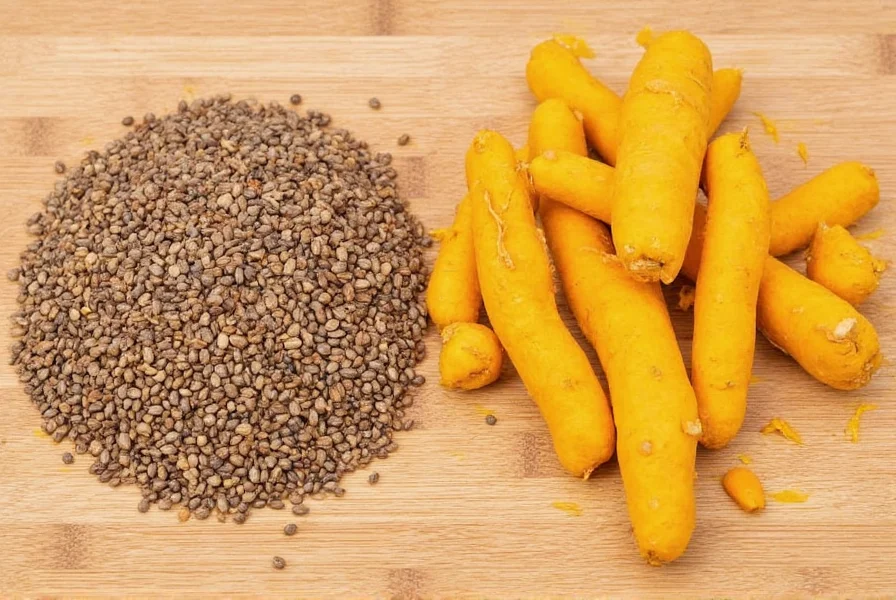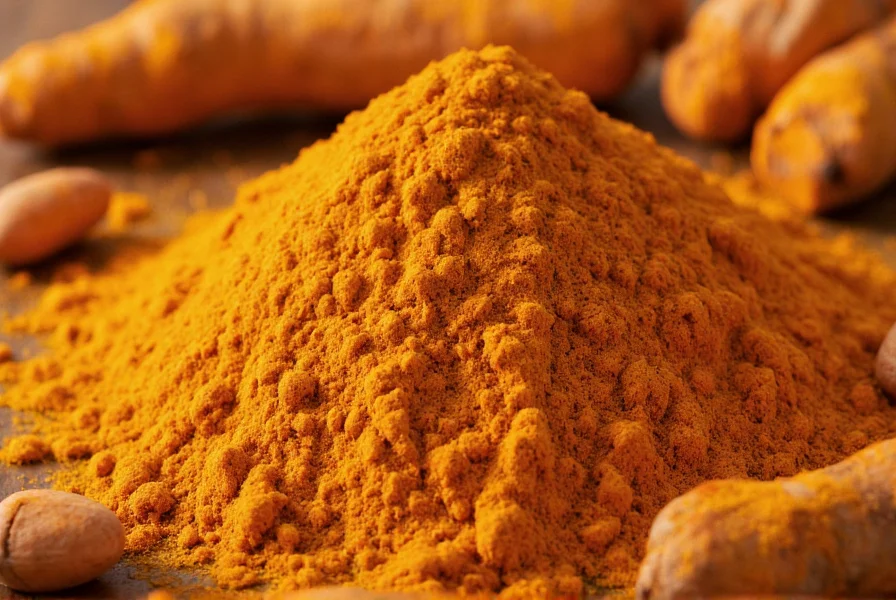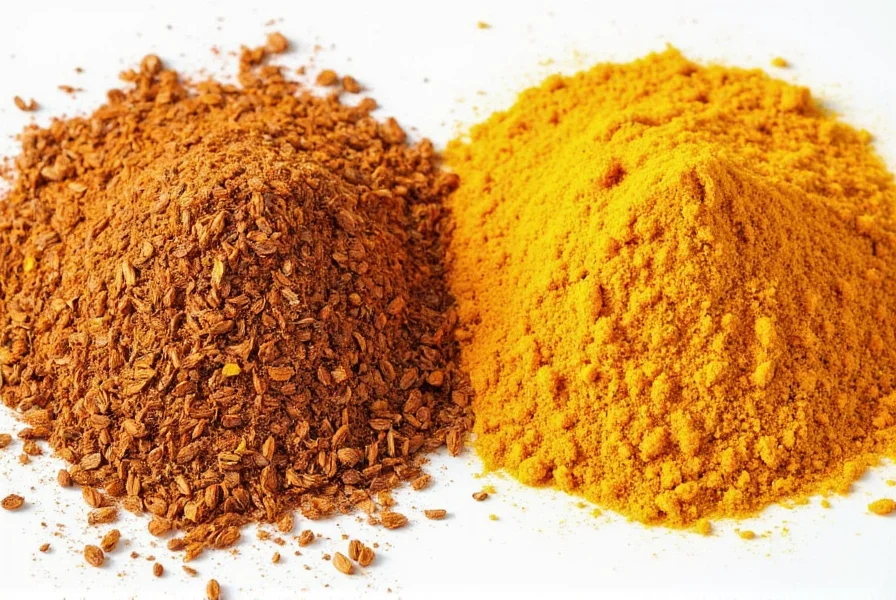When comparing cumin vs turmeric, understanding their fundamental differences helps home cooks and health-conscious individuals make informed choices. These two popular spices frequently appear in global cuisines but serve distinctly different purposes in both cooking and wellness contexts. Let's explore their characteristics to clarify when and why you'd choose one over the other.
Botanical Origins and Physical Characteristics
Cumin (Cuminum cyminum) belongs to the Apiaceae family, which includes parsley and carrots. The spice comes from dried seeds of the cumin plant, appearing as small, oblong seeds with longitudinal ridges. When ground, cumin powder ranges from light to medium brown.
Turmeric (Curcuma longa) is part of the Zingiberaceae family, making it a relative of ginger. This spice comes from the plant's rhizomes (underground stems), which are boiled, dried, and ground into the familiar bright yellow-orange powder. Fresh turmeric rhizomes resemble ginger but with vibrant orange flesh.

Flavor Profiles and Culinary Applications
The taste difference between cumin and turmeric significantly impacts their culinary uses. Cumin delivers a warm, earthy flavor with subtle citrus notes and a slight bitterness when toasted. Its robust profile stands up well to long cooking times, making it essential in chili, stews, and spice blends like garam masala and chili powder.
Turmeric offers a more complex profile—earthy with subtle bitter notes and a hint of ginger-like warmth. Its most notable characteristic is the vibrant yellow color it imparts to dishes. Unlike cumin, turmeric's flavor is more delicate and can become bitter if overused. It's fundamental in curry powders, mustards, and rice dishes.
| Characteristic | Cumin | Turmeric |
|---|---|---|
| Flavor Profile | Earthy, warm, slightly bitter, with citrus notes | Earthy, mildly bitter, subtle ginger notes |
| Color Contribution | Light to medium brown | Vibrant yellow-orange |
| Heat Tolerance | High - improves with long cooking | Moderate - can become bitter if overcooked |
| Signature Dishes | Tacos, chili, hummus, Indian curries | Curries, mustard, golden milk, rice dishes |
Nutritional Comparison: Cumin vs Turmeric
When examining cumin vs turmeric nutritional comparison, both spices offer impressive nutrient density despite being used in small quantities. A single teaspoon (2g) provides:
Cumin shines with exceptional iron content (1.4mg per teaspoon, about 8% of daily value) and notable amounts of manganese and calcium. It also contains plant compounds like cuminaldehyde that may support digestion.
Turmeric's nutritional value centers around curcumin, its primary active compound, which constitutes about 2-8% of turmeric by weight. While turmeric contains some manganese and iron, its significance lies in curcumin's potential anti-inflammatory properties. Research suggests curcumin may help reduce inflammation markers, though absorption requires pairing with black pepper (piperine).
Health Benefits: Scientific Perspective
Understanding the health benefits of cumin versus turmeric requires examining current scientific evidence without overstating claims. Both spices show promise in research, but their mechanisms differ significantly.
Studies on cumin suggest potential benefits for digestion and blood sugar regulation. A 2019 review in Nutrients highlighted cumin's traditional use for digestive support and emerging evidence for metabolic health. The spice contains compounds that may stimulate digestive enzymes and support healthy cholesterol levels.
Turmeric research focuses primarily on curcumin's anti-inflammatory effects. According to a 2020 meta-analysis in Phytotherapy Research, curcumin supplementation showed significant reductions in inflammatory markers like C-reactive protein. However, the review noted that curcumin has low bioavailability without enhancers like piperine from black pepper.

Practical Usage Guide
When considering which is better cumin or turmeric for specific applications, remember they serve different culinary purposes. Neither is universally "better"—they complement different flavor profiles and dish requirements.
When to choose cumin:
- For earthy depth in chili, tacos, and Middle Eastern dishes
- When building foundational flavors in spice blends
- For recipes needing warm, slightly smoky notes
- When seeking iron-rich seasoning options
When to choose turmeric:
- For vibrant color in rice, sauces, and mustards
- When creating anti-inflammatory golden milk
- For Southeast Asian and Indian curry bases
- When seeking curcumin's potential health properties
Can you substitute cumin for turmeric? Generally not advisable due to their distinct flavor profiles and color contributions. In emergencies, a small amount of paprika with a pinch of saffron might mimic turmeric's color, but no substitute perfectly replicates either spice's unique characteristics.
Storage and Quality Considerations
Both spices lose potency over time, but proper storage extends their shelf life. Keep both in airtight containers away from light and heat. Ground spices typically remain potent for 6-12 months, while whole seeds (for cumin) can last up to two years.
When purchasing turmeric, look for vibrant color as an indicator of quality and curcumin content. For cumin, whole seeds generally offer better flavor retention than pre-ground versions. Toasting cumin seeds before grinding enhances their aromatic compounds.
Frequently Asked Questions
What's the main difference between cumin and turmeric?
The primary difference lies in their botanical origin and flavor profile. Cumin comes from dried seeds with an earthy, warm flavor, while turmeric comes from rhizomes (roots) with a vibrant yellow color and earthy-bitter taste. They belong to different plant families and serve distinct culinary purposes.
Can I substitute cumin for turmeric in recipes?
Generally no, as they have completely different flavor profiles and color contributions. Cumin provides earthy warmth while turmeric offers vibrant yellow color with subtle bitterness. In some dishes, you might use a small amount of paprika with saffron for color, but the flavors won't match turmeric's unique profile.
Which spice has more health benefits, cumin or turmeric?
Both offer different potential benefits. Turmeric contains curcumin, which has been extensively studied for anti-inflammatory properties. Cumin shows promise for digestive health and may support metabolic function. Neither is universally 'better'—they provide complementary benefits, and including both in your diet offers the most comprehensive advantages.
Why does turmeric stain more than cumin?
Turmeric contains curcuminoids, particularly curcumin, which are powerful natural pigments responsible for its vibrant yellow-orange color. These compounds bind strongly to surfaces, causing stubborn stains. Cumin lacks these intense coloring compounds, resulting in less staining potential despite its earthy color.
How can I improve turmeric's absorption in my body?
Turmeric's active compound curcumin has low bioavailability. To enhance absorption, combine turmeric with black pepper (which contains piperine) and a healthy fat like olive oil or coconut milk. Heating turmeric slightly may also increase bioavailability. This is why traditional preparations like golden milk include these complementary ingredients.











 浙公网安备
33010002000092号
浙公网安备
33010002000092号 浙B2-20120091-4
浙B2-20120091-4